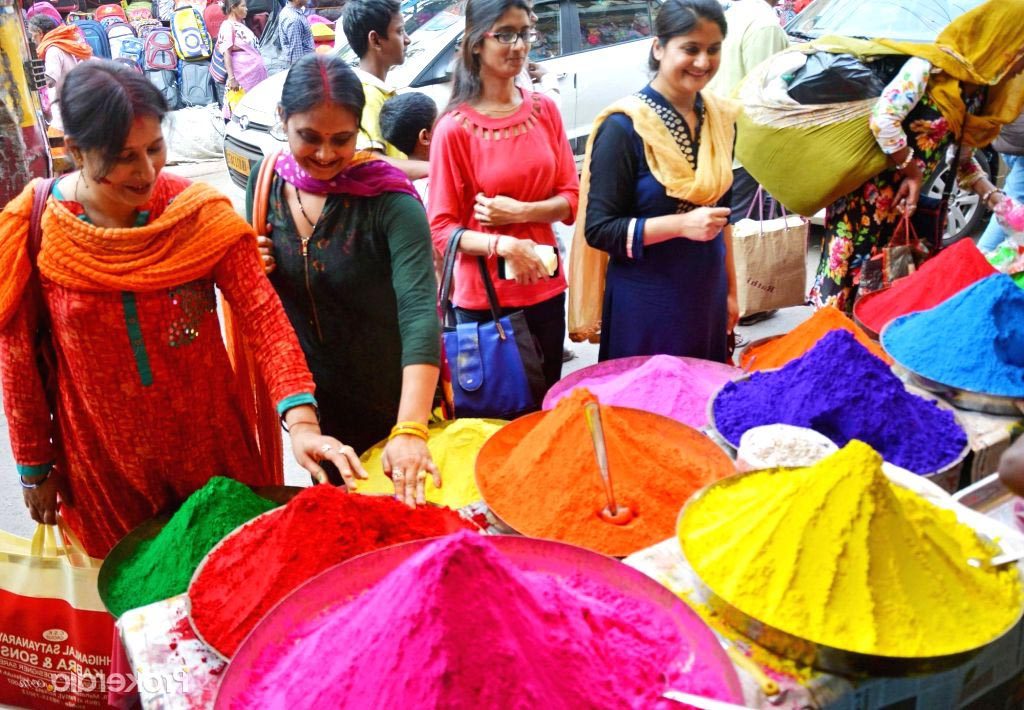Festivals are integral parts of rich and diverse cultural heritage of India. Festivals bring colours in our life. Among various festivals, Holi is the occasion which is of great joy and celebrations across the length and breadth of our country. But festival seasons are accompanied with pollution like water, air, noise, soil. Solid wastes including non-degradable plastic-polythene garbage are generated in large amounts across the country, thereby accelerating greater load of pollutants and contaminants to our environment. This is also known as the “festival of colours” or the “festival of love”. The discharge of the toxic colors in the soil and water has a deleterious effect on the water resources and soil fertility.
The traditional Holi is an ancient Hindu spring festival, celebrated predominantly in India, but has also spread to other areas of Asia and parts of the Western world. This festival signifies the victory of good over evil, end of winter, arrival of spring, and for many a festive day to meet others thus enhancing the fellowship. It is also celebrated as a thanksgiving for a good harvest. Holi has become popular with non-Hindus in many parts of South Asia, as well as people of other communities outside Asia. In addition to India and Nepal, the festival is celebrated by Indian subcontinent diaspora in countries such as Jamaica, Suriname, Guyana, Trinidad and Tobago, South Africa, Malaysia, the United Kingdom, the United States, Canada, Mauritius, and Fiji. In recent years the festival has spread to parts of Europe and North America as a spring celebration of love, frolic, and colours.
Holi celebration starts on the night before Holi with a Holika Dahan where people gather, sing and dance. The next morning is a free-for-all carnival of colors, where participants play, chase and color each other. But now, in modern times Holi festival has become commercialised and embedded with pollution and health hazards.
In past, Holi was celebrated with natural colours that were easily available in the market or can be made at home. Thus, everybody play safe Holi at that time. Today, markets are over flooded with different types of paste colours, wet and dry colours, containing harmful chemicals in it. The chemical colours contain solvents like lead, aromatic compounds, tetraethylene and benzene. Red, green and black are some of the dark colours that contain copper sulphate, mercury sulfide and lead oxide respectively in high content. These harmful colours cause allergy in eyes which results in blindness, redness and allergy of the eyes.
Excess intake of black colour containing lead oxide through air directly affects the kidney and renal failure.
- Chlorine iodine contains in purple colour causes asthma.
- Red colour containing mercury sulfide is highly toxic.
- Sometimes it directly attacks the nervous system which results in mental retardation.
- Blue color containing Prussian blue leads to dermatitis due to rashes and itching.
- All these colors directly affect the hair. Once the colour gets dry, it results in dry and brittle hair.
It can even prove fatal side-effects of Holi colours & can ruin the spirit of the festivals. Chemical colours are more in demand and easily available as they are cheap as compared to the natural herbal colours. Don’t throw colour on animals and have a cruelty-free Holi.
Chemical Holi colours affect our Health
- Causes permanent eye damage.
- Leads to skin damage and allergies.
- Can be irritating to ear canal.
- Colour water can be harmful if consumed.
The festival of ‘Holi’ is proving to be an environmental risk due to the toxic colors used during the celebrations. Unlimited and uncontrolled use of such dyes can lead to grave consequences in terms of human health and ecological balance. These colors are highly structured polymers and are very difficult to decompose biologically.
Direct contact with these colours should be avoided and be washed the body as soon as possible before they enter through pores and mix with the blood. One should not stand in front of sunlight for a long time after applying colours. To avoid all the harmful effects of chemical colours, flower petals and natural herbal colours should be preferred. It is very necessary to use eco-friendly colours and play safe Holi.
These eco-friendly powders and pastes are natural extracts from flowers, vegetables and minerals. Red, orange, yellow, green colours can be made from petals of rose, henna, marigold, spinach leaves respectively.
Creating awareness through Eco-clubs; Green Skill Development Trainees and Internship students by using natural Holi colours
Students are taught simple steps involved in preparing herbal Holi colours, to prevent pollution of water & land sources resulting from the entry of toxic Holi colours in water, to reduce the amount of water wasted thus, in washing off the colours from the skin, to stop playing with plastic balloons filled with coloured water.
Let us make an effort to have pollution-free festivals this year. Eco-friendly festivals are gaining momentum among the masses gradually. Eco-friendly festivals are celebrated in such a way so as to bring minimum or no harm to the environment. Bid farewell to synthetic, unhygienic colours and play holi with a renewed zest with herbal colours.
Prof. Dr. Ashutosh Debata, Director, Centre for Environmental Studies, Forest and Environment Department
